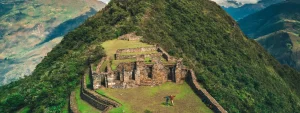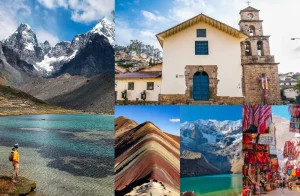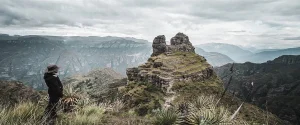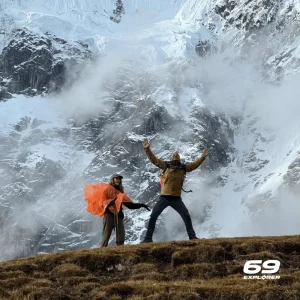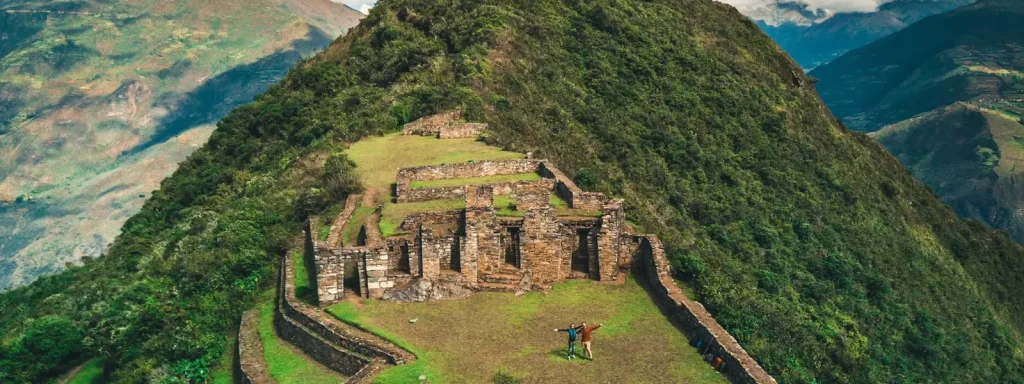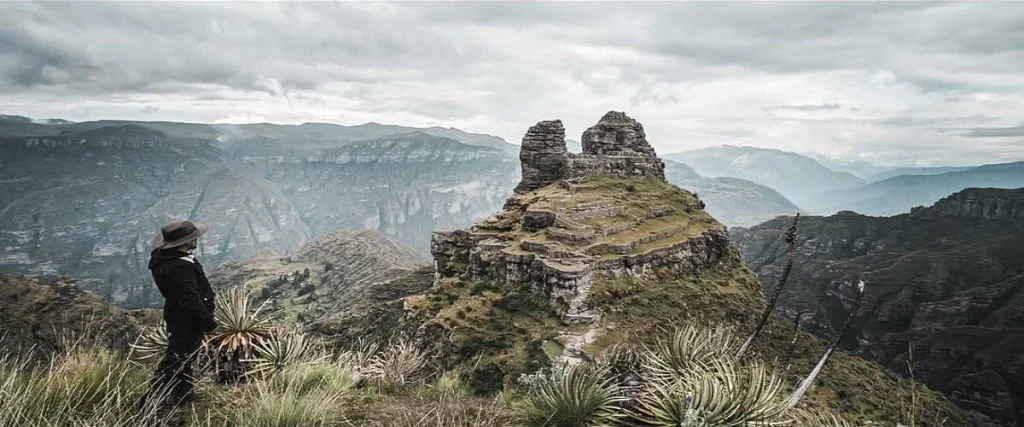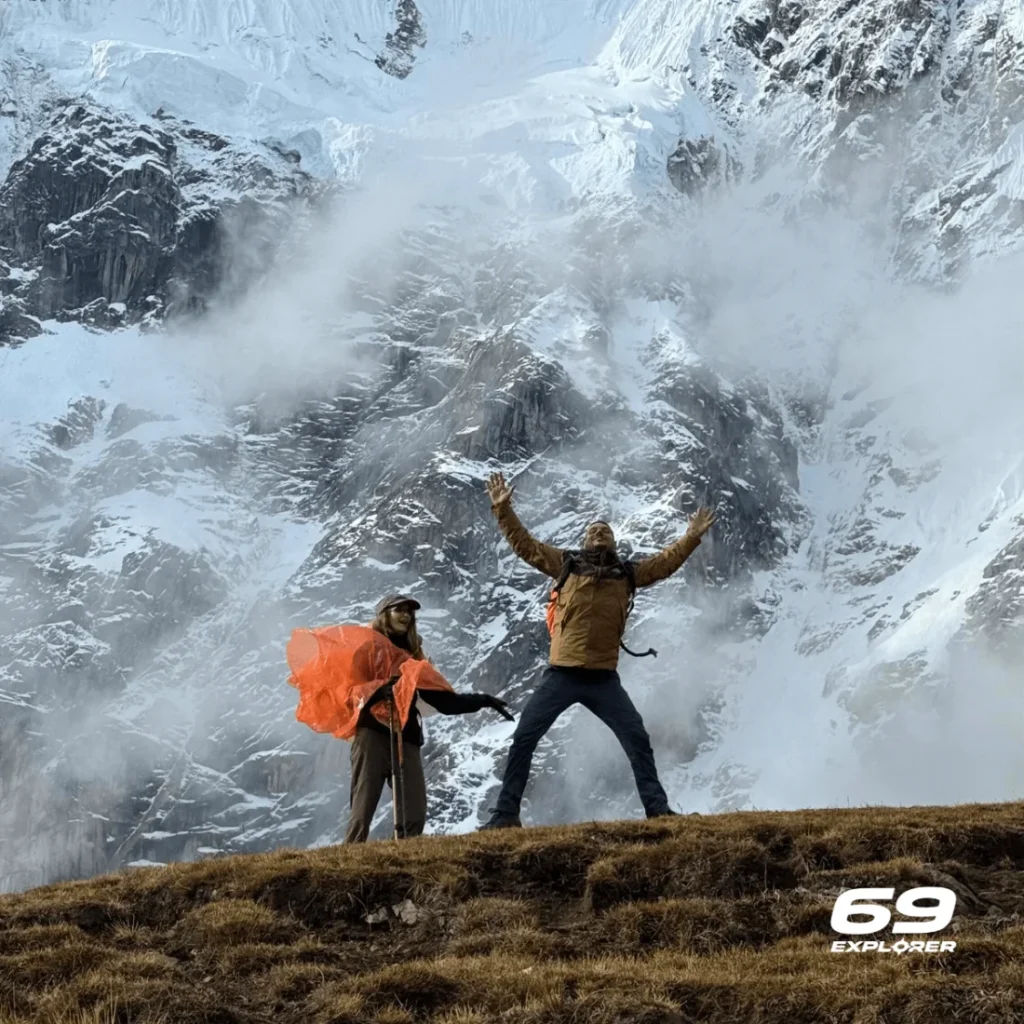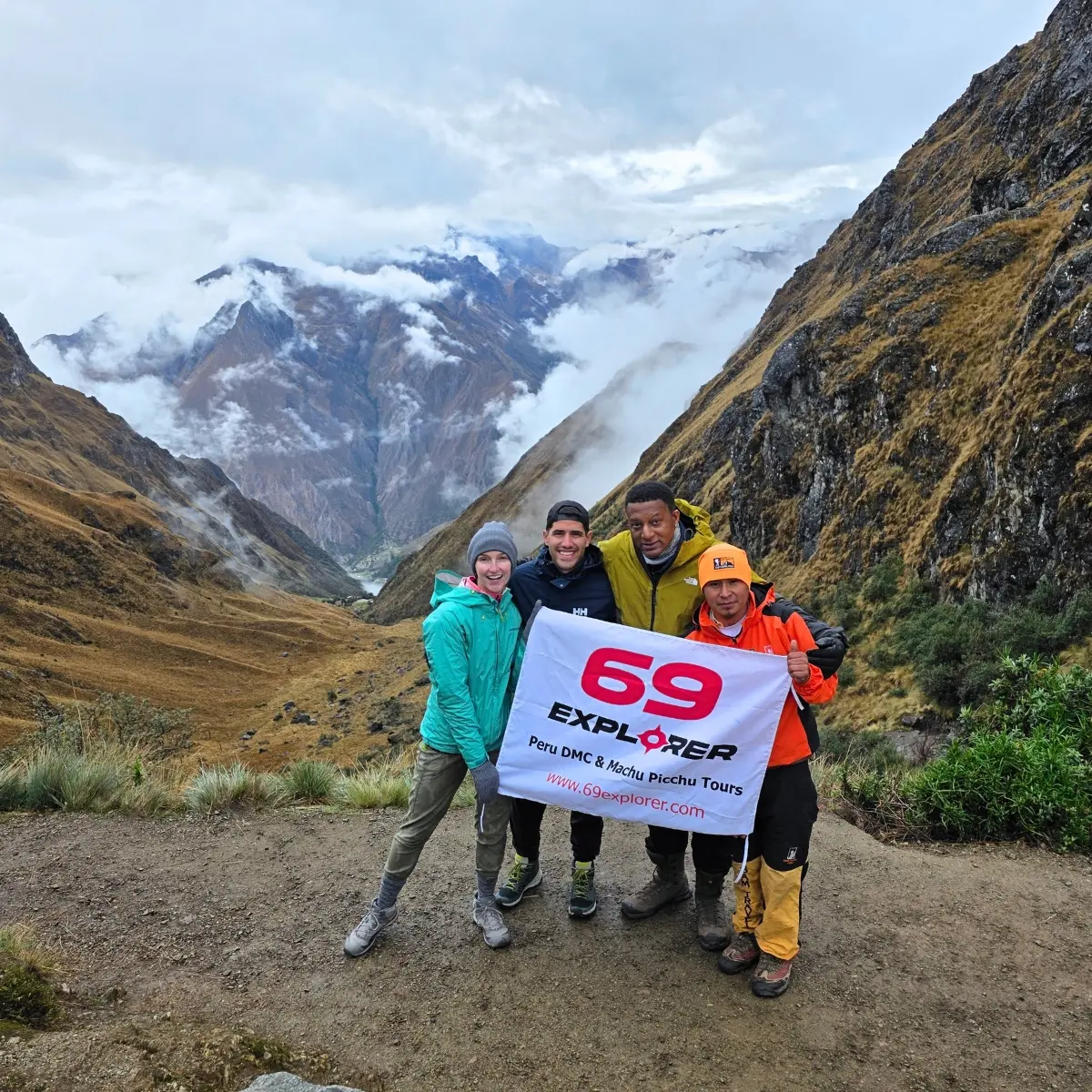At the end of the Inca Trail, you will see the awe inspiring Machu Picchu, you’ll learn about the history and wonder at the ingenuity of the Inca builders. But before you reach Machu Picchu there are many other ruins that will amaze you with stories of the Incan civilizations.
Here is a list of all the Inca Ruins that you will see on you 4-day trek to Machu Picchu.
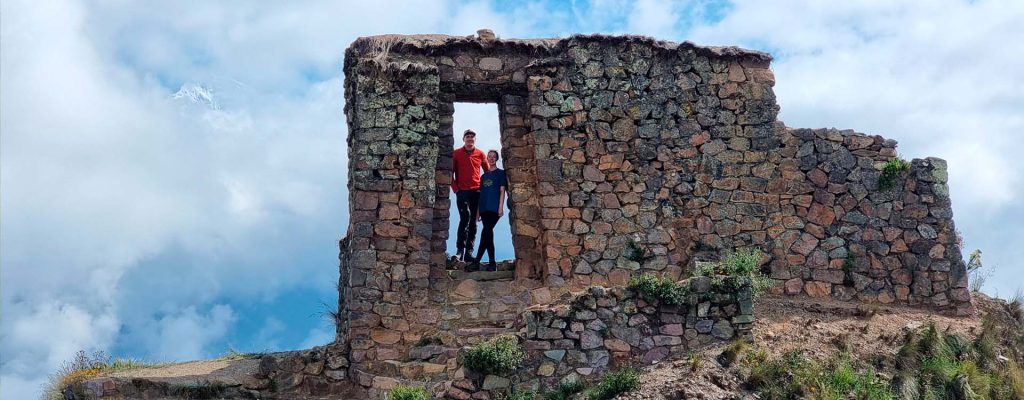
Inca Ruins
Patallacta or Llactapata

Patallacta is the first site along the Classic Inca Trail, the site is located at 2840 m above sea level. Historians believe that the site was an agricultural and administrative support complex to Machu Picchu. The site features impressive terraces that supplied crops for Machu Picchu and Cusco. After 6km (3.8 mi) of hiking, you will reach the first set of Inca Trail ruins.
Hiram Bingham famous for discovering Machu Picchu, was the first westerner to note this site in 1912. The first thorough investigation was in 2003 and was led by Thompson and Ziegler.
Runkurakay
Runkurakay a Inca ruin surrounded by lush vegetation, it is located at 3760 m above sea level. You will enjoy a guided tour as well as some of the best views of the trail. From Runkurakay you can spot the famous Dead Woman’s Pass which is the highest point of the Inca Trail. Historians believe Runkurakay was a rest spot for pilgrims on the Inca Trail and an administrative center. These runners relayed messages up and down the trail. They were the only form of communication between the different Inca cities and traveling parties.
Sayacmarca
Sayacmarca was originally built by the Colla civilization, however, the Inca added irrigation there are views to the Aobamba Valley and Pumasillo mountain. The site is composed of paths and organized enclosures. Experts believe that it was used for ceremonial and astrological use during the Inca Empire. Sayacmarca roughly translates as ‘Town you cannot enter’.
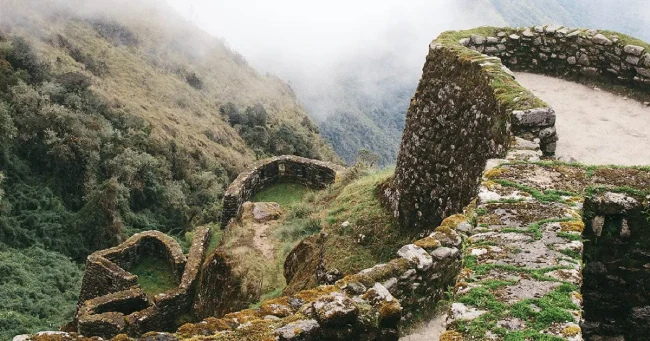
The hike to reach Sayacmarca is up 98 stone stairs carved into the side of the mountain. The site is separated into the sun temple and the residential area with narrow corridors. The Colla civilization originally built this structure. During the time of the Incan civilization, builders added water canals to the temple and houses.
Phuyupatamarca
Phuyupatamarca is known as a place in the clouds. The site is composed of terraces carved into the mountain, many enclosures and ritual baths, the baths are still replenished by an underground river. Phuyupatamarca is the prefect balance of human and nature, with magnificent structures surrounded by the best of mother nature. The views of Intipata and Winaywayna are also breathtaking.
Intipata
Intipata is considered by many to be a hidden gem. Being very close to Machu Picchu it is believed that it was used for agricultural purposes, as there are water canals that feed all the terraces at Initpata. In Inca times Intipata was used as a shortcut to Machu Picchu. It is one of the steepest and most impressive sets of terraces along the Inca trail. Crops like potatoes, corn, oca, quinoa, and coca leaves were grown here.
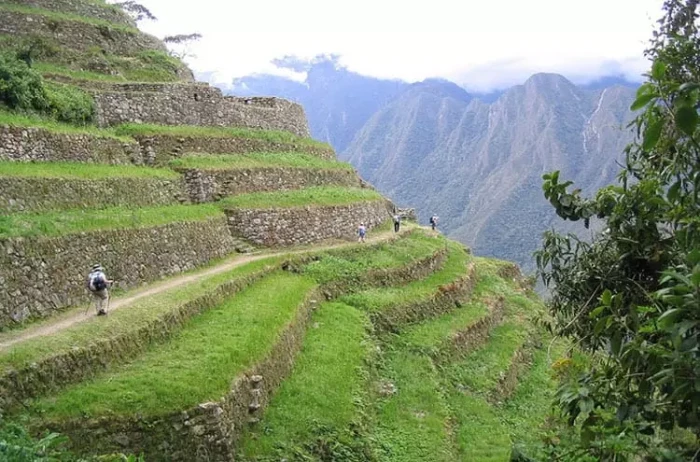
Chachabamba
One of the last ruins on the Inca trail Chachamamba has many different canals and stone pools. A small ruin with a few structures used for ceremonial purposes the site was most likely a center for the worship of water. The many baths imply that Chachamamba was also used as a purification center where pilgrims could cleans themselves before reaching Machu Picchu. Discoveries are still being made! In 2021, using laser technology, 14 more baths were found under the jungle vegetation. The discovery further suggests the site’s use as a ritual bathhouse.
Winay Wayna
A truly impressive site, Winay Wayna is located at 3800 meters above sea level, only 4kms away from Machu Picchu. Higher and lower sections of housing are linked by fountains and canals. It is not known exactly what the site was for. Most historians suggest that Winay Wayna was an agricultural center and food warehouse. It was likely also an administrative and spiritual center. This is arguably the most impressive site of the Inca Ruins on the route to Machu Picchu.
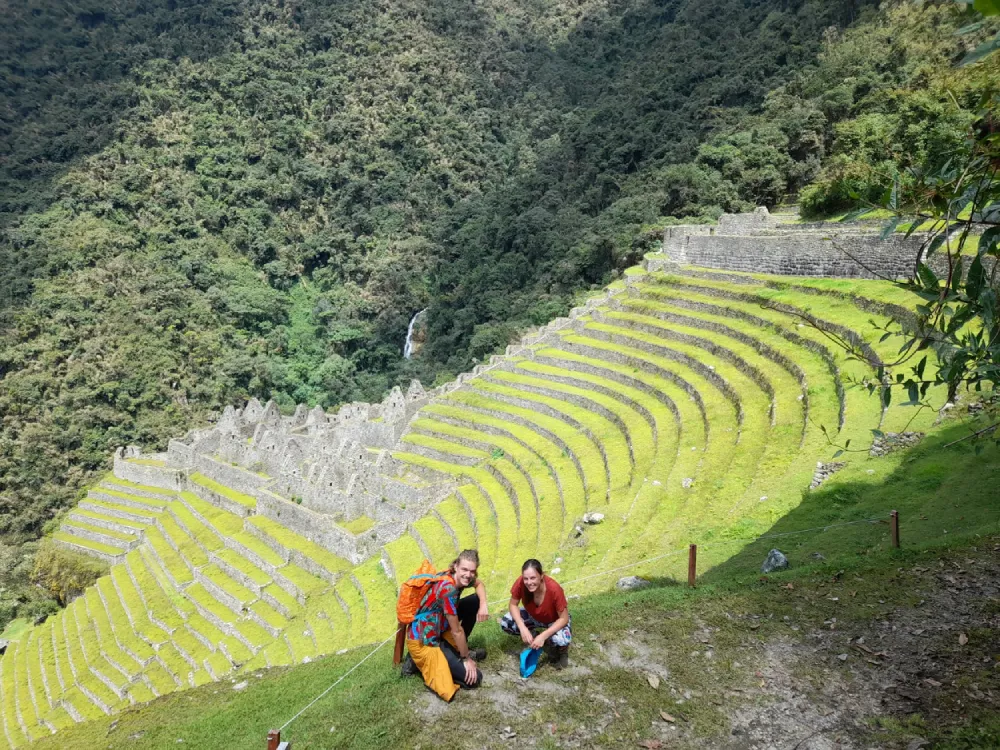
This is the last campsite on the Inca Trail, the site features massive terraces etched into the mountain. Above Winay Wayna is a waterfall and the views of the Urubamba River and Mount Veronica are more than impressive.
Inti Punku
At the end of the Inca Trail, after you have climbed the Gringo Killer steps, you will arrive to Inti Punku, from here you will get a spectacular view of Machu Picchu. In Inca times it served as an entry point or check point into Machu Picchu. It was also used for ceremonial purposes and the worship of Inti, the sun god, during the winter solstice. This structure was explicitly placed on a ridge on Machu Picchu’s eastern slope. During the Summer solstice, the sun passes directly through the arch. Regardless of your spirituality, witnessing this is a mesmerizing experience. Today trekkers are rewarded with the sunrise over Machu Picchu at the finish of the Inca Trail.
Machu Picchu
Well, it is not on the Inca Trail but we need to give Machu Picchu its due. Located at 2400 above sea level and wedged between the High Andes and the rainforest, the area is rich in ancient history, flora and fauna. To date, the exact purpose or the complex is still a mystery. Its temples, terraces, wall, palaces and enclosures leave visitors and experts with immense wonder. Fortunately, the European conquerors did not discover and destroy the intricate stonework. Many of Machu Picchu’s structures remain intact for us to marvel at today. Take a guided tour around the ruins, learn the history of the Inca Citadel after your tour you will some free time to explore and take photos.
How to prepare for the Inca Trail
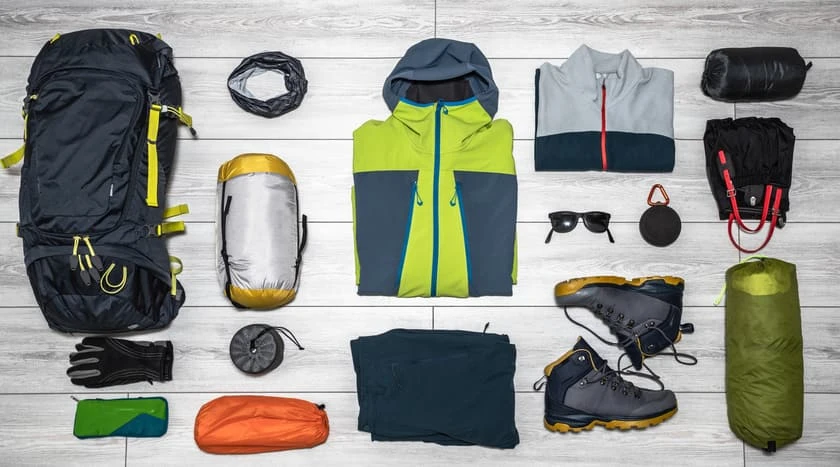
- Book with a Travel Company: The Peruvian government requires that a professional guide accompanies all hikers. Only 500 people are allowed on the Inca Trail per day, so make sure you organize your permit and private guide or book a tour in advance.
- Physical Prep: The Inca Trail is no joke and even those who are reasonably fit may find themselves short of breath on the trek. It is highly recommended, at the very least, hiking before your trip with the gear you’ll carry on the Inca Trail. It’s a great way to make sure you only pack what you can handle. If you want to get in better shape before the trek, cardio is a great way to increase your endurance, and weight training will strengthen your upper body and legs.
- Mental Prep: Preparing your mind is just as important as preparing your body. There are parts of the hike that will feel easy and others that will have you questioning your ability to finish the trail. You need to push through those hard moments and keep your motivation in mind to help you reach your final destination.
The Inca civilization is one of the most fascinating and brilliant cultures to ever exist. Through their ancient sites we can get some idea on how they lived and worked. See their spirituality and how they worked with the elements and mother nature. Book your Inca Trail today, book early to avoid disappointment.
At the end of the Inca Trail, you will see the awe inspiring Machu Picchu, you’ll learn about the history and wonder at the ingenuity of the Inca builders. But before you reach Machu Picchu there are many other ruins that will amaze you with stories of the Incan civilizations.
Here is a list of all the Inca Ruins that you will see on you 4-day trek to Machu Picchu.
Inca Ruins
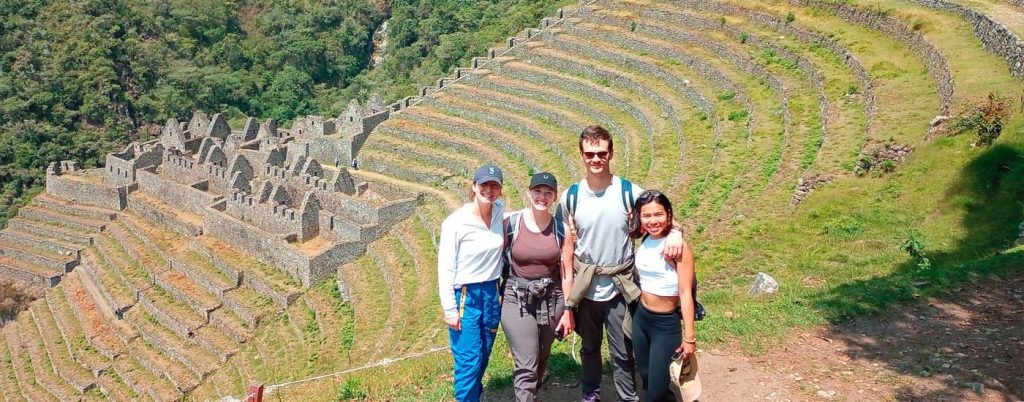
Patallacta or Llactapata
Patallacta is the first site along the Classic Inca Trail, the site is located at 2840 m above sea level. Historians believe that the site was an agricultural and administrative support complex to Machu Picchu. The site features impressive terraces that supplied crops for Machu Picchu and Cusco. After 6km (3.8 mi) of hiking, you will reach the first set of Inca Trail ruins. Hiram Bingham famous for discovering Machu Picchu, was the first westerner to note this site in 1912. The first thorough investigation was in 2003 and was led by Thompson and Ziegler.
Runkurakay
Runkurakay a Inca ruin surrounded by lush vegetation, it is located at 3760 m above sea level. You will enjoy a guided tour as well as some of the best views of the trail. From Runkurakay you can spot the famous Dead Woman’s Pass which is the highest point of the Inca Trail. Historians believe Runkurakay was a rest spot for pilgrims on the Inca Trail and an administrative center. These runners relayed messages up and down the trail. They were the only form of communication between the different Inca cities and traveling parties.
Sayacmarca
Sayacmarca was originally built by the Colla civilization, however, the Inca added irrigation there are views to the Aobamba Valley and Pumasillo mountain. The site is composed of paths and organized enclosures. Experts believe that it was used for ceremonial and astrological use during the Inca Empire. Sayacmarca roughly translates as ‘Town you cannot enter’. The hike to reach Sayacmarca is up 98 stone stairs carved into the side of the mountain. The site is separated into the sun temple and the residential area with narrow corridors. The Colla civilization originally built this structure. During the time of the Incan civilization, builders added water canals to the temple and houses.
Phuyupatamarca
Phuyupatamarca is known as a place in the clouds. The site is composed of terraces carved into the mountain, many enclosures and ritual baths, the baths are still replenished by an underground river. Phuyupatamarca is the prefect balance of human and nature, with magnificent structures surrounded by the best of mother nature. The views of Intipata and Winaywayna are also breathtaking.
Intipata
Intipata is considered by many to be a hidden gem. Being very close to Machu Picchu it is believed that it was used for agricultural purposes, as there are water canals that feed all the terraces at Initpata. In Inca times Intipata was used as a shortcut to Machu Picchu. It is one of the steepest and most impressive sets of terraces along the Inca trail. Crops like potatoes, corn, oca, quinoa, and coca leaves were grown here.
Chachabamba
One of the last ruins on the Inca trail Chachamamba has many different canals and stone pools. A small ruin with a few structures used for ceremonial purposes the site was most likely a center for the worship of water. The many baths imply that Chachamamba was also used as a purification center where pilgrims could cleans themselves before reaching Machu Picchu. Discoveries are still being made! In 2021, using laser technology, 14 more baths were found under the jungle vegetation. The discovery further suggests the site’s use as a ritual bathhouse.
Winay Wayna
A truly impressive site, Winay Wayna is located at 3800 meters above sea level, only 4kms away from Machu Picchu. Higher and lower sections of housing are linked by fountains and canals. It is not known exactly what the site was for. Most historians suggest that Winay Wayna was an agricultural center and food warehouse. It was likely also an administrative and spiritual center. This is arguably the most impressive site of the Inca Ruins on the route to Machu Picchu. This is the last campsite on the Inca Trail, the site features massive terraces etched into the mountain. Above Winay Wayna is a waterfall and the views of the Urubamba River and Mount Veronica are more than impressive.
Inti Punku
At the end of the Inca Trail, after you have climbed the Gringo Killer steps, you will arrive to Inti Punku, from here you will get a spectacular view of Machu Picchu. In Inca times it served as an entry point or check point into Machu Picchu. It was also used for ceremonial purposes and the worship of Inti, the sun god, during the winter solstice. This structure was explicitly placed on a ridge on Machu Picchu’s eastern slope. During the Summer solstice, the sun passes directly through the arch. Regardless of your spirituality, witnessing this is a mesmerizing experience. Today trekkers are rewarded with the sunrise over Machu Picchu at the finish of the Inca Trail.
Machu Picchu
Well, it is not on the Inca Trail but we need to give Machu Picchu its due. Located at 2400 above sea level and wedged between the High Andes and the rainforest, the area is rich in ancient history, flora and fauna. To date, the exact purpose or the complex is still a mystery. Its temples, terraces, wall, palaces and enclosures leave visitors and experts with immense wonder. Fortunately, the European conquerors did not discover and destroy the intricate stonework. Many of Machu Picchu’s structures remain intact for us to marvel at today. Take a guided tour around the ruins, learn the history of the Inca Citadel after your tour you will some free time to explore and take photos.
How to prepare for the Inca Trail

- Book with a Travel Company: The Peruvian government requires that a professional guide accompanies all hikers. Only 500 people are allowed on the Inca Trail per day, so make sure you organize your permit and private guide or book a tour in advance.
- Physical Prep: The Inca Trail is no joke and even those who are reasonably fit may find themselves short of breath on the trek. It is highly recommended, at the very least, hiking before your trip with the gear you’ll carry on the Inca Trail. It’s a great way to make sure you only pack what you can handle. If you want to get in better shape before the trek, cardio is a great way to increase your endurance, and weight training will strengthen your upper body and legs.
- Mental Prep: Preparing your mind is just as important as preparing your body. There are parts of the hike that will feel easy and others that will have you questioning your ability to finish the trail. You need to push through those hard moments and keep your motivation in mind to help you reach your final destination.
The Inca civilization is one of the most fascinating and brilliant cultures to ever exist. Through their ancient sites we can get some idea on how they lived and worked. See their spirituality and how they worked with the elements and mother nature. Book your Inca Trail today, book early to avoid disappointment.

